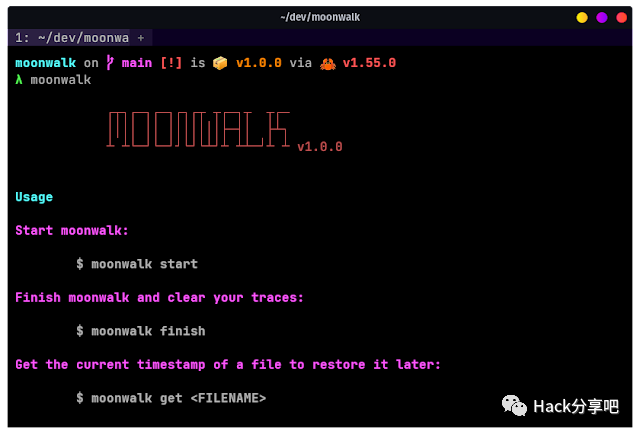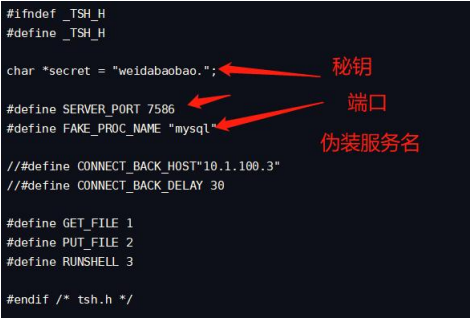本文来源:
在 Linux 中,有一个非常有用的命令可以向你显示最近使用过的所有最后命令。该命令简称为
在 Linux 中,有一个非常有用的命令可以向你显示最近使用过的所有最后命令。该命令简称为
history。显示时间戳
通常当你从命令行键入历史记录时,它会显示命令# 和命令。出于审计目的,将时间戳与命令一起显示可能会有所帮助,如下所示。export HISTTIMEFORMAT='%F %T ' history | more 1 2020-06-25 19:02:39 systemctl restart network 2 2020-06-25 19:02:43 exit 3 2020-06-25 19:02:47 id 4 2020-06-25 19:02:56 cat /etc/hosts
使用 Control+R 搜索历史记录
这可能是你历史上最常用的功能。当你已经执行了一个很长的命令时,你可以简单地使用关键字搜索历史记录并重新执行相同的命令,而无需完全键入它。- 按 Control+R 并键入关键字。
- 当你看到你的命令时按回车键,这将执行历史记录中的命令。
host,它显示cat /etc/hosts了历史记录中包含单词的上一个命令host。(reverse-i-search)`host': cat /etc/hosts cat /etc/hosts # 11 localhost.localdomain localhost server1 ::1 localhost.localdomain localhost server1有时你想在执行之前编辑历史命令。例如,你可以搜索
systemctl,它将systemctl restart network从命令历史记录中显示,选择此命令(按 ESC 键)并更改
restart为stop并再次重新执行,如下所示。(reverse-i-search)`systemctl': systemctl stop network systemctl stop network
使用 4 种不同的方法快速重复上一个命令
有时你可能会因为各种原因重复前面的命令。以下是重复上次执行命令的 4 种不同方式。- 使用
up arrow查看上一条命令,按回车键执行。 - 类型
!!,并按命令行输入 !-1从命令行键入 并按回车键。- 按
Control+P会显示上一条命令,按回车键执行。
执行历史记录中的特定命令
在下面的例子中,如果你想重复命令#4,你可以做!4 如下所示。history | more
systemctl restart network exit id cat /etc/hosts
!4
cat /etc/hosts # 11 localhost.localdomain localhost server1 ::1 localhost.localdomain localhost server1
执行以特定单词开头的上一个命令
输入!后跟要重新执行的命令的开头几个字母。在以下示例中,输入!ps并回车,执行以 开头的上一个命令ps,即ps aux | grep yp。!ps
ps aux | grep yp root 16947 0 1 36516 1264 ? Sl 13:10 0:00 ypbind root 17503 0 0 4124 740 pts/0 S+ 19:19 0:00 grep yp
控制历史总行数
将以下两行附加到.bash_profile并重新登录到 bash shell 以查看更改。在此示例中,1500 命令将存储在 bash 历史记录中。vi ~/.bash_profile
HISTSIZE=1500 HISTFILESIZE=1500
更改历史文件名
默认情况下,历史记录存储在~/.bash_history 文件中。将以下行添加到 .bash_profile 并重新登录到 bash shell,将历史命令存储在.my_commandline文件而不是.bash_history文件中。当你想要使用不同的历史文件名跟踪从不同终端执行的命令时,会使用它。vi ~/.bash_profile
HISTFILE=/root/.my_commandline
消除历史的连续重复输入
在下面的例子pwd中输入了 3 次,当你做 history 时,你可以看到它的所有 3 次连续出现。为了消除重复的,设置HISTCONTROL到ignoredups如下所示。history | tail -4
44 pwd 45 pwd 46 pwd 47 history | tail -4 export HISTCONTROL=ignoredups history | tail -3 56 export HISTCONTROL=ignoredups 57 pwd 58 history | tail -4
擦除整个历史中的重复项
上面显示的 ignoreups 仅当它们是连续命令时才会删除重复项。要消除整个历史记录中的重复项,请将 HISTCONTROL 设置为 erasedups,如下所示。export HISTCONTROL=erasedups pwd systemctl restart network history | tail -3 38 pwd 39 systemctl restart network 40 history | tail -3 ls -l systemctl restart network history | tail -6 35 export HISTCONTROL=erasedups 36 pwd 37 history | tail -3 38 ls -l 39 systemctl restart network 40 history | tail -6
强制历史记录不记住特定命令
当你执行命令时,你可以通过设置HISTCONTROL为ignorespaceAND 在命令前键入一个空格来指示历史记录忽略该命令,如下所示。我可以看到很多初级系统管理员对此感到兴奋,因为他们可以从历史记录中隐藏命令。了解ignorespace工作原理是很好的。但是,作为最佳实践,不要有目的地向历史隐瞒任何事情。export HISTCONTROL=ignorespace ls -ltr pwd systemctl restart network #Note that there is a space at the beginning of service, to ignore this command from history
history | tail -3
67 ls -l 68 pwd 69 history | tail -3
清除所有以前的历史记录
有时你可能想清除所有以前的历史记录,但又想让历史记录向前推进。history -c
替换历史命令中的单词
当你搜索历史记录时,你可能想要执行不同的命令,但使用刚刚搜索的命令中的相同参数。在下面的示例中,!!:$ vi 命令的 next 获取从前一个命令到当前命令的参数。ls nginx.conf nginx.conf vi !!:$ vi nginx.conf`在下面的示例中,
!^ vi 命令的 next 获取从前一个命令(即cp命令)到当前命令(即vi命令)的第一个参数。cp nginx.conf nginx.conf.bak vi !^
vi nginx.conf
将特定参数替换为特定命令
在下面的示例中,!cp:2 搜索历史记录中以 cp 开头的上一个命令,并采用 cp 的第二个参数并将其替换为 ls -l 命令,如下所示。cp ~/longname.txt /really/a/very/long/path/long-filename.txt ls -l !cp:2 ls -l /really/a/very/long/path/long-filename.txt在下面的示例中,
!cp:$ 搜索历史记录中以 cp 开头的上一个命令,并采用 cp 的最后一个参数(在这种情况下,也是如上所示的第二个参数)并将其替换为 ls -l 命令,如下所示.ls -l !cp:$
ls -l /really/a/very/long/path/long-filename.txt
禁用历史的使用
如果你想同时禁用历史记录并且不希望 bash shell 记住你输入的命令,请将 设置HISTSIZE为 0,如下所示。export HISTSIZE=0 history # Note that history did not display anything
忽略历史记录中的特定命令
有时你可能不想用基本命令(例如pwd和 )弄乱你的历史记录ls。使用HISTIGNORE你想从历史中忽略指定的所有命令。请注意,添加ls到HISTIGNOREignores onlyls而不是ls -l. 因此,你必须提供你希望从历史记录中忽略的确切命令。export HISTIGNORE="pwd:ls:ls -ltr:" pwd ls ls -l systemctl restart network
history | tail -3
79 export HISTIGNORE="pwd:ls:ls -l:" 80 systemctl restart network 81 history [Note that history did not record pwd, ls and ls -l]
转载请注明来自网盾网络安全培训,本文标题:《深入了解Linux中的history》
- 上一篇: 数字化靶场的未来方向
- 下一篇: webshell溯源排查与反制












